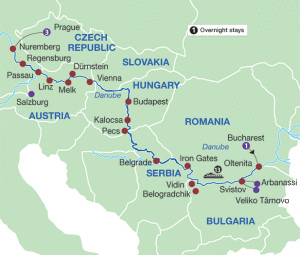Vinca Culture
Tartaria Tablets
The Tartaria Tablets are three clay tablets found in 1961 in Romania, which have been a source of controversy for over half a century. They are incised  with symbols that have been compared with those of the Vinca culture in the same region. If the Tablets are a genuine script they possibly pre-date the Sumerian script by a thousand years, having been dated to 5300 BC! Because Plato told us that Atlantis had writing, a few unconvincing attempts have been made to link Atlantis with the Vinca culture(c).
with symbols that have been compared with those of the Vinca culture in the same region. If the Tablets are a genuine script they possibly pre-date the Sumerian script by a thousand years, having been dated to 5300 BC! Because Plato told us that Atlantis had writing, a few unconvincing attempts have been made to link Atlantis with the Vinca culture(c).
Marija Gimbutas the celebrated archaeologist bravely declared that the Tablets were examples of the world’s earliest writing system.
Keith Massey who, along with his twin brother Kevin, has offered an interpretation of the Phaistos Disk has now produced a mathematical explanation for the Tablets and has outlined it in a YouTube clip(a).
>A 2022 blog on the Old European Culture website offers an interesting attempt to decipher some of what is referred to as the third tablet(d).<
A free 400-page book about Tartaria Tablets can be applied for online(b).
(a) https://www.youtube.com/watch?v=D_UD-Dm1ge8
(b) https://www.prehistory.it/Tartaria_book/Tartaria_book_index_.htm
(c) https://web.archive.org/web/20190830053312/https://www.black-sea-atlantis.com/black-sea-atlantis/
(d) https://oldeuropeanculture.blogspot.com/2022/01/tartaria-tablets.html *
Iron Gate(s), The
The Iron Gate(s) is the name given to a gorge on the River Danube that forms part of the boundary between Serbia and Romania. A century ago, Nicolae Densusianu proposed The Iron Gate as the location for the Pillars of Heracles, on the Danube in ancient Dacia, modern Romania.
A recent book [1742] by Antonije Shkokljev & Slave Nikolovski–Katin has related an ancient version of the ‘Labours of Hercules’ based in the Balkan-Danube region.
 Recently, Ranko Jakovljevic expressed the view that the Iron Gate section of the Danube in Serbia was the location of Atlantis.
Recently, Ranko Jakovljevic expressed the view that the Iron Gate section of the Danube in Serbia was the location of Atlantis.
A paper presented to the 2008 Atlantis Conference by Ticleanu, Constantin & Nicolescu [750.375] has the ‘Pillars of Heracles’ located at the Iron Gate but placed Atlantis a little further west on what is now the Pannonian Plain.
>In 2020 Veljko Milkovic also placed the ‘Pillars’ at the Iron Gates on the Danube and Atlantis in the Pannonian Basin(c)(d) in his book Panonska Atlantida [1932].<
This minority view of Atlantis located in Eastern European is seen by a few commentators to be vindicated by the literate Vinca culture(b) of the Danubian region, although the Schoppes see the Vinca people as refugees from their original home in the Black Sea region(a).
For me, all those theories conflict with Plato’s unambiguous statement that the invading Atlanteans came from the west (Tim.25b & Crit.114c). In fact, what Plato actually said was that the invasion came from the Atlantic Sea (pelagos). Although there is some disagreement about the location of this Atlantic Sea, all candidates proposed so far are west of both Athens and Egypt.
(a) https://web.archive.org/web/20190819053842/https://www.black-sea-atlantis.com/schoppe.pdf
Vinca Culture
The Vinca Culture flourished between 6,500 and 3,500 BC, in the region of  the Eastern Danube and is considered to have had contact with the better-known civilisation of Sumer. It is also accepted that Vinca influenced the development of the later Minoan civilisation. This is exemplified by the Vinca writing and its close resemblance to the Linear A script of ancient Crete and the shared motif of the double axe. The Vinca Culture developed houses arranged in streets, produced high-quality ceramics and were able to fashion copper. Furthermore, there is now (2013) clear evidence of tin bronze being fashioned around 4650 BC at a Vinca site in Serbia(a).
the Eastern Danube and is considered to have had contact with the better-known civilisation of Sumer. It is also accepted that Vinca influenced the development of the later Minoan civilisation. This is exemplified by the Vinca writing and its close resemblance to the Linear A script of ancient Crete and the shared motif of the double axe. The Vinca Culture developed houses arranged in streets, produced high-quality ceramics and were able to fashion copper. Furthermore, there is now (2013) clear evidence of tin bronze being fashioned around 4650 BC at a Vinca site in Serbia(a).
>Although there has been no suggestion of any link between Vinca and Atlantis, apart from Christian and Siegfried Schoppe, who identified the Vinca people as refugees from Atlantis(c).<
Supporters of the early date given by Plato for Atlantis see the Vinca civilisation as evidence for the possibility of a very early culture having existed and providing inspiration for the Atlantis story. Consequently, the Schoppes have suggested that the Vinca script may have provided the means whereby the Atlantis story was transmitted, relatively intact, to the Egyptians(b).
However, it must be noted that although Vinca was ‘advanced’ it came nowhere near to the detailed description of Atlantis offered by Plato.
See: Tartaria Tablets
(a) https://www.stonepages.com/news/archives/005197.html
(b) https://web.archive.org/web/20190830053312/https://www.black-sea-atlantis.com/black-sea-atlantis/
(c) The Vinca – Atlantis refugees (archive.org) *
